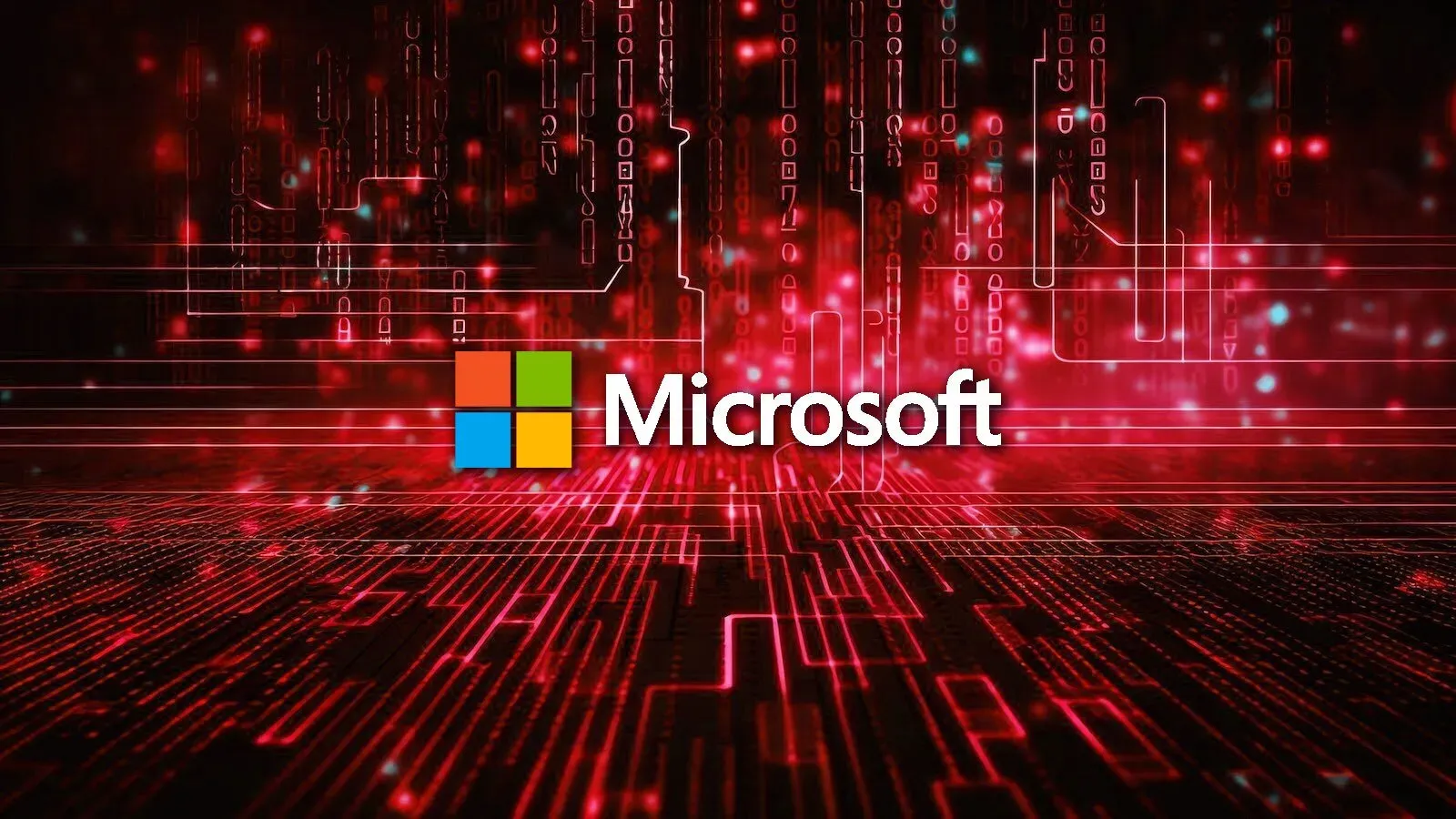In today’s landscape of digital threats, Microsoft hack protection has never been more critical. With the recent breaches targeting Microsoft SharePoint security, organizations are increasingly vulnerable to cyberattacks that can compromise sensitive data and disrupt operations. As hackers exploit known vulnerabilities, it’s essential for businesses to adopt robust cybersecurity best practices and ensure that their systems are fortified against potential threats. Implementing effective data breach prevention strategies, including regular updates and enabling features like the Antimalware Scan Interface, can significantly help protect from hackers. By prioritizing Microsoft hack protection, companies can safeguard their information and maintain the integrity of their operations in an increasingly hostile environment.
The importance of safeguarding systems against digital intrusions is underscored by the recent vulnerabilities found in Microsoft’s platforms. As threats evolve, organizations require robust strategies for cybersecurity, particularly when using popular tools like SharePoint. This calls for the implementation of proactive measures to defend against unauthorized access and to mitigate risks. Utilizing advanced security features and maintaining awareness of cybersecurity fundamentals can aid businesses in creating a resilient infrastructure. The ongoing challenges in tech security highlight the necessity of embracing comprehensive solutions for effective protection from the myriad of cyber threats that can occur.
Understanding Microsoft SharePoint Security Vulnerabilities
The recent attacks on organizations utilizing Microsoft SharePoint have highlighted critical security vulnerabilities that must be addressed swiftly. Hackers exploited previously unknown weaknesses within the SharePoint server software, demonstrating how crucial it is for companies to remain vigilant about software updates and security patches. SharePoint’s role in managing and sharing sensitive documents means that a breach can have serious consequences, including potential data theft and unauthorized access to corporate information.
Effective Microsoft SharePoint security requires organizations to implement regular security audits and assessments to identify vulnerabilities. The integration of cybersecurity best practices, such as continuous monitoring for anomalies and ensuring proper access controls, can help fend off potential intrusions. Additionally, companies must ensure that all staff are educated about these vulnerabilities and the importance of maintaining a secure digital environment.
Steps for Cybersecurity Best Practices
In the landscape of modern cybersecurity threats, it is vital for businesses to adopt robust cybersecurity best practices. This means establishing strong password policies, conducting regular employee training on identifying phishing attempts, and ensuring that all software, including Microsoft SharePoint, is regularly updated with the latest security patches. Active monitoring and logging of system activities can also help in recognizing unauthorized access attempts early on.
Moreover, organizations should invest in security technologies such as multi-factor authentication (MFA) and data encryption to bolster their defenses. By fostering a culture that prioritizes cybersecurity and implementing comprehensive risk management strategies, businesses can effectively guard against data breaches and other disruptive cyber incidents.
Protecting Against Data Breach Prevention
Data breaches can have devastating effects on organizations, often resulting in financial losses and damage to reputation. To mitigate these risks, companies must develop and implement proactive data breach prevention strategies. This includes regular vulnerability assessments, employing encryption for sensitive data, and keeping all employees informed about potential security threats that could jeopardize organizational data.
Additionally, organizations should engage in incident response planning, which involves preparing a detailed action plan to respond effectively to any potential data breaches. These measures, combined with regular training and updates on the latest cybersecurity trends, can significantly enhance an organization’s ability to prevent and mitigate the effects of data breaches.
Enabling Antimalware Scan Interface for Enhanced Protection
One of the crucial steps recommended by Microsoft for protecting against hacks targeting SharePoint is enabling the Antimalware Scan Interface (AMSI). This interface plays a vital role by allowing applications to synchronize with antimalware products, scanning files for potential threats before they can do any harm. A properly configured AMSI can detect malicious content in real-time, significantly reducing the risk of malware infiltration.
To maximize its effectiveness, organizations must ensure that their AMSI settings are regularly updated and monitored. This preventive measure should be part of a broader strategy that incorporates other cybersecurity best practices, such as regular system audits and employee training on the importance of malware awareness. By taking these steps, organizations can create a fortified defense against malicious attacks.
The Importance of Early Detection in Cybersecurity
Early detection is crucial when it comes to cybersecurity, especially in the context of the ongoing attacks against Microsoft SharePoint servers. The faster an organization can identify a breach, the quicker it can respond to mitigate damage. Tools and software that provide continuous monitoring of network traffic can help detect anomalies that may indicate a security incident.
Companies should establish protocols that allow for rapid reporting and escalation of suspected security incidents. By fostering a culture of transparency and awareness regarding potential threats, organizations can take swift action and potentially thwart ongoing attacks before they escalate into larger issues.
Incident Response Planning: A Vital Strategy
Incident response planning is a critical component of effective cybersecurity management. In the wake of a breach, having a well-defined plan can help organizations react swiftly and minimize damage. An effective incident response involves predefined roles and responsibilities, communication strategies, and immediate steps that need to be taken to contain and remediate the threat.
Regularly reviewing and updating the incident response plan to reflect emerging threats and vulnerabilities is essential. This includes integrating lessons learned from past incidents to improve future responses. Organizations can also benefit from conducting tabletop exercises or simulations to prepare their teams for real-life cybersecurity incidents.
Best Practices for Protecting Microsoft SharePoint
To protect Microsoft SharePoint from increasingly sophisticated threats, organizations should adopt a comprehensive security framework. This includes not only keeping the software updated with the latest security patches but also implementing stringent access controls. By limiting who can access sensitive SharePoint documents, businesses can reduce their risk exposure and bolster their defenses against potential attacks.
Additionally, organizations should conduct regular security training for all employees, making them aware of phishing attacks and other tactics used by hackers. Encouraging a proactive security mindset among staff can be one of the most effective ways to protect valuable data and maintain a secure SharePoint environment.
Understanding the Threat Landscape of Microsoft SharePoint
As the frequency and complexity of cyberattacks continue to rise, understanding the threat landscape surrounding Microsoft SharePoint is imperative for organizations. Attackers continuously develop new strategies to exploit vulnerabilities, necessitating that companies remain informed about evolving threats and how to counteract them. This understanding enables organizations to prioritize their cybersecurity efforts and allocate resources effectively.
Organizations should also stay abreast of the latest advisories from cybersecurity entities and Microsoft related to SharePoint vulnerabilities. By actively participating in threat intelligence sharing among industries, companies can gain insights into new attack vectors and enhance their overall security posture against potential intrusions.
Maintaining Compliance for Data Protection
Compliance with data protection regulations is not just a legal requirement; it is also a fundamental aspect of maintaining customer trust and safeguarding corporate data. For organizations utilizing Microsoft SharePoint, adhering to regulations such as GDPR or HIPAA can significantly impact their security practices and policies. Ensuring that all employees understand these regulations and how they pertain to data handling on SharePoint is essential.
Regularly auditing compliance measures and aligning SharePoint configurations with legal requirements can help organizations avoid fines and keep customer data secure. This proactive approach to compliance can also serve as a competitive advantage in an increasingly regulated business environment, highlighting the organization’s commitment to data security.
Engaging with Cybersecurity Experts
In the face of complex cybersecurity threats, working with cybersecurity experts can provide organizations with invaluable insights and specialized knowledge. Engaging with trusted cybersecurity firms can aid in identifying vulnerabilities within Microsoft SharePoint and implementing tailored security solutions. These experts can also assist in developing incident response strategies and preparing for potential cyber-attacks.
Moreover, ongoing collaboration with cybersecurity professionals allows organizations to stay informed about the latest threats and cybersecurity best practices. By forming strategic partnerships, companies can bolster their defenses and ensure a rapid response to any incidents that may arise, while also minimizing risks associated with potential data breaches.
Frequently Asked Questions
What is Microsoft hack protection and how does it relate to SharePoint security?
Microsoft hack protection involves various measures and tools designed to safeguard Microsoft software, particularly SharePoint security, from cyber threats. This includes the implementation of security updates, configuration of the Antimalware Scan Interface, and adherence to cybersecurity best practices to prevent potential data breaches.
How can organizations protect from hackers exploiting Microsoft SharePoint vulnerabilities?
Organizations can protect from hackers by applying the latest security updates to their Microsoft SharePoint servers, enabling and configuring the Antimalware Scan Interface, and ensuring compliance with cybersecurity best practices. It’s essential to assess and monitor systems regularly for any signs of compromise.
What are the cybersecurity best practices for securing Microsoft SharePoint?
Cybersecurity best practices for securing Microsoft SharePoint include regularly applying security patches, configuring the Antimalware Scan Interface, conducting vulnerability assessments, and training staff on security awareness. Additionally, organizations should establish strong access controls and regularly back up their data to prevent data breaches.
What steps should be taken for data breach prevention in Microsoft SharePoint?
For effective data breach prevention in Microsoft SharePoint, organizations should regularly update their systems, enable the Antimalware Scan Interface, isolate affected servers during a compromise, renew exposed credentials, and involve incident response teams. Vigilance and proactive risk assessment are key components of any robust cybersecurity strategy.
How does the Antimalware Scan Interface enhance Microsoft hack protection?
The Antimalware Scan Interface enhances Microsoft hack protection by allowing antivirus software to scan and filter content in real-time across Microsoft products, including SharePoint. Proper configuration of this interface helps defend against malware and other cyber threats, ensuring a safer environment for sensitive data.
What actions should organizations take if their Microsoft SharePoint servers are compromised?
If Microsoft SharePoint servers are compromised, organizations must immediately isolate the affected servers, assess the extent of the compromise, renew all potentially exposed credentials, and engage with their incident response teams for technical guidance. It’s crucial to act swiftly to mitigate further risks.
Can SharePoint Online users be affected by Microsoft hack protection breaches?
SharePoint Online users are generally not affected by on-premises Microsoft hack protection breaches, as these exploits typically target vulnerabilities in local SharePoint servers. However, users should remain vigilant and follow Microsoft’s recommendations for overall security to protect their data.
Why is it important to implement Microsoft sharepoint security measures in the wake of a cyber attack?
Implementing Microsoft SharePoint security measures after a cyber attack is crucial to restore trust, safeguard sensitive information, and prevent future breaches. These measures, including installing security patches and configuring the Antimalware Scan Interface, help reinforce the organization’s defenses against evolving cyber threats.
| Key Point | Details |
|---|---|
| Recent Attacks on Microsoft SharePoint | Hackers have exploited vulnerabilities in Microsoft SharePoint Server software, affecting numerous organizations. |
| Vulnerability Identification | Eye Security reported significant exploitation of a vulnerability that was previously not widely known. |
| Impact of the Hack | Only on-premises SharePoint servers were compromised; SharePoint Online was unaffected. |
| Risks Involved | Once compromised, hackers can access all SharePoint content and move laterally through the organization’s network. |
| Immediate Actions Recommended | Organizations should apply security updates, enable Antimalware Scan Interface, and assess for compromise urgently. |
| Recommendations from CISA and Eye Security | Isolate affected servers, renew credentials, and engage incident response teams if impacted. |
Summary
Microsoft hack protection is essential in light of recent attacks exploiting vulnerabilities in SharePoint Server software. Organizations must prioritize applying security updates and configuring security protocols to mitigate risks effectively. The rapid evolution of these threats highlights the need for continuous monitoring and immediate action in case of suspected compromises.



